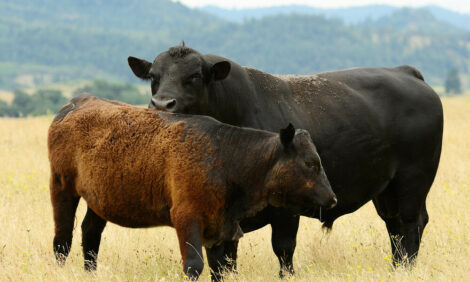



LMC Report: The Carbon Footprint of Livestock
UK - In the Bulletin of 18 June 2009, the topic of Carbon Footprint was flagged up, in order to start to raise awareness of a subject that was going to become a major issue for the red meat industry.Readers should already have heard enough recent adverse publicity, such as “Meat free Mondays” and “Give up meat to save the planet”, to realise that this issue is now upon us in populist activity areas. Unfortunately populist views have run ahead of the science, so we ought to try and encapsulate what scientific information there is.
One of the key issues is that of measurement of carbon footprint, and what should be taken into account. The emphasis to date, and therefore discussion in various forums, has been only on emissions i.e. how much carbon is given-off, with a distinct lack of emphasis on sequestration or the ‘carbon sink’ effect of the soil soaking-up carbon.
Furthermore the issue is being treated in a similar way to farm costs, for which it is often said that a profit can easily be generated if we do not include all the costs. So it is in the case of carbon – various enterprises can be made to look good by not including all the carbon factors. There is a failure to take account of the nitrous oxide release from cultivating land to grow crops, some which feed intensively reared animals, a failure to take into account the carbon footprint of the manufacture of fertiliser needed to grow crops, and a failure to take into account the carbon footprint of all the inputs to production (e.g. buildings - concrete, steel; transport – roads, ships, vehicles; etc).
Natural England published its Carbon Baseline Survey results over a year ago, calculating both carbon emissions and sequestrations but confined to ‘within the physical farm boundary’. On-site methane emissions from livestock and manure and on-site CO2 emissions from fuel combustion are included. Some offsite emissions such as from grain grown for feed, and from fertiliser manufacture and transport were not included, but carbon sequestration in grassland that had changed from a previous land use, and sequestration of carbon from crop residues incorporated back into soils were included in the account (envisage this as more like a financial account of outputs and inputs). The results are shown in Table 1 expressed as net emissions of tonnes of carbon dioxide equivalent (CO2e) per hectare.
| Table 1: Farm carbon accounts: net carbon emissions by farm types (tCO2e per hectare) | |||
|---|---|---|---|
| Farm type | Mean | Min | Max |
| text | 10.7 | 4.3 | 19.6 |
| text | 5.5 | 0.6 | 13.5 |
| text | 4.2 | 2.1 | 7.8 |
| text | 3.2 | 1.9 | 5.6 |
| text | 2.8 | 0.4 | 7.9 |
| text | 2.5 | 0.0 | 6.3 |
Further Reading
| - | You can view the full report by clicking here. |
TheCattleSite News Desk


